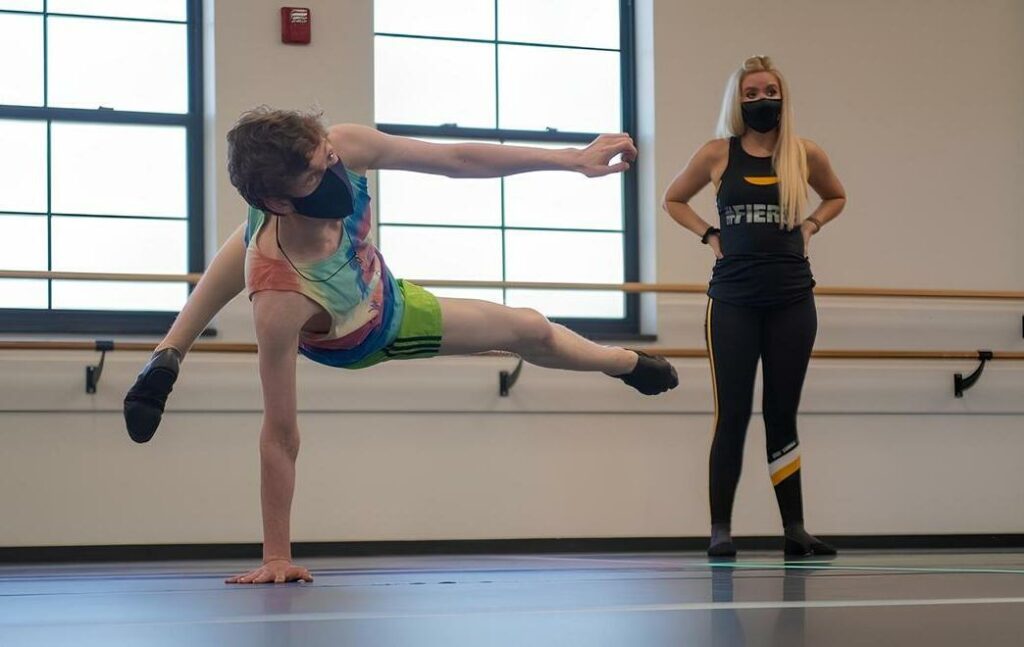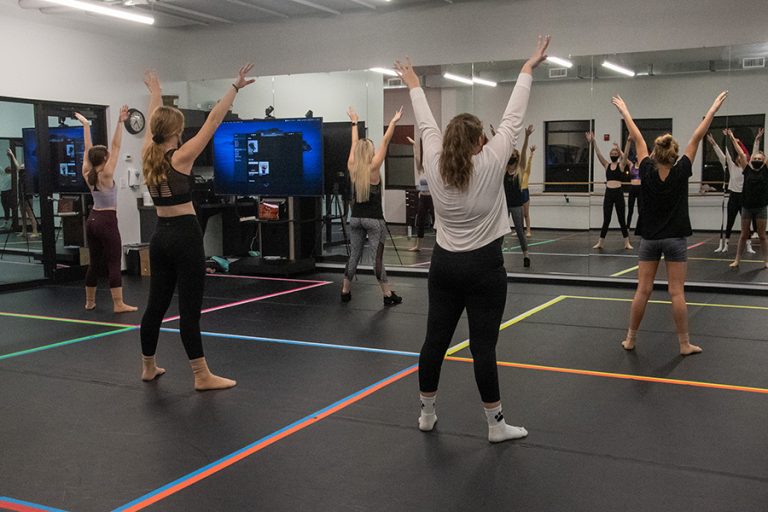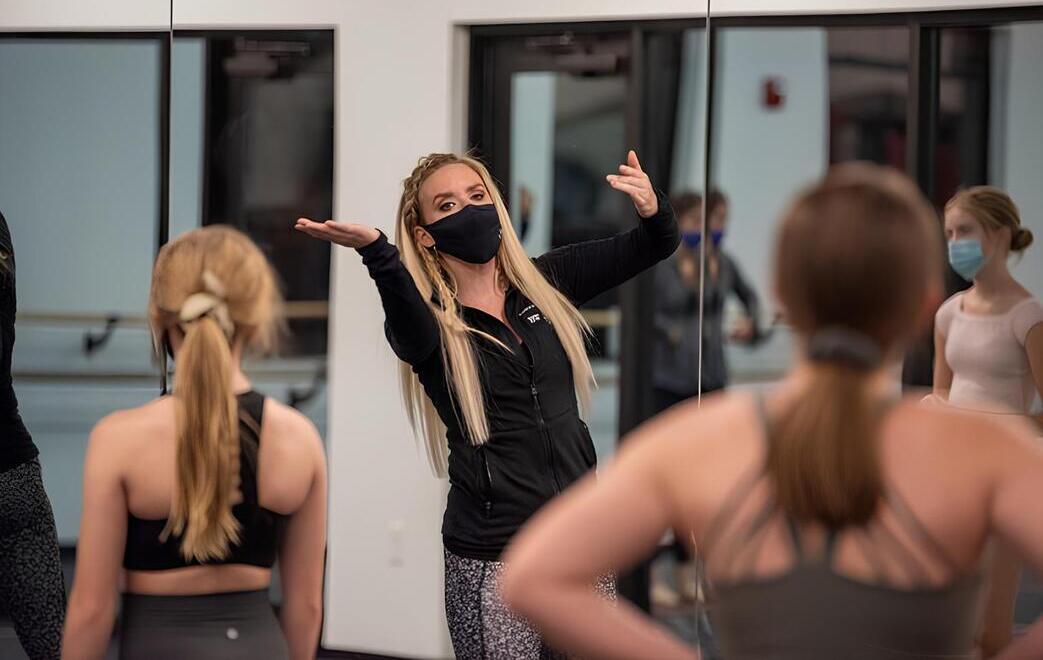As the Program Coordinator of Dance, I fully embraced a hybrid teaching format during the fall semester of dance classes and private lessons. Dance is very physical; not only do dancers fly across the floor, but classes require an instructor to gently manipulate the torso or a limb so the dancer can feel the correct position. During the fall semester, that freedom to move and physical contact was not possible in either a virtual or in-person class due to safety measures. I soon discovered I had to develop a larger arsenal of teaching tools to help students learn and enjoy the process at the same time.
I would like to share what I see as five unexpected advantages of teaching during this time. My hope is that this will offer some inspiration for your own adaptive strategies – regardless of what your day-to-day looks like.
1. Revisiting the fundamentals
We all have slowed down during the last several months. We’re cooking more, reading more, taking up new hobbies. Now is the perfect time to revisit the basics of dance – or any curriculum – and make sure the foundation is solid. I say all the time that dance is like connect the dots. You cannot make your picture until you have connected those first, most simple, positions and techniques. Teaching these days is allowing us to revisit some of those basics so our students have a deeper foundation and can find the next dots on their own.
2. Adapting language to fill the gaps

There is nothing that can replace in-person instruction, especially in dance. Not having students in the same space or if they are, not being able to physically correct them presents obvious challenges. I have always used similes and metaphors to help our students ‘see’ a position or feel a movement quality, but now I find myself using them even more. My descriptive language is all I can rely on, so I’m forced to be creative and find ways to make the students visualize what I need them to do. Not being able to physically help our students find a placement has led me to taking more time explaining the ‘why’ their bodies work a certain way and how they can isolate and activate a specific muscle or muscle group. This knowledge of the body has great long-term benefits for our students. I want them to be able to dance for a lifetime and not have injuries or a body that is breaking down in their 20s.
3. Opening doors to diverse training methods
Classrooms are designed specifically for learning and contain all the proper tools an instructor needs to teach, and students need to learn. This gets complicated in a virtual setting for any subject, but particularly a subject as physical as dance. It is really difficult to teach turns or large jumps when students are dealing with improper flooring and tight spaces (in their homes). I had to go back to the drawing board and create engaging drills that would replicate certain body movements with all of these new limitations. I spent hours in my own living room testing out drills to work on muscle groups, positions, balance and turns without ever actually turning. When I brought the drills back to the students, it was really cool to see them connect their own dots and realize how their turns were improving as a result. I’m really proud of these new drills; they will be incorporated into my curriculum even after we return to normal instruction.
4. Finding creative inspiration out of necessity

In response to physical distancing requirements, we outfitted the dance studios with zones taped on the floors. Dancers must stay within their zone throughout the class. Gone was the ability to take up the entire floor performing a combination. As an instructor, one of my jobs is to teach my students how to use their space, how to make their dance expansive, and how to flow from one sequence to the next. Zones make this extremely difficult. I got creative by using different movement patterns – diagonals or back and forth, immediately transitioning from left to right. It is not ideal, and I am excited to have across-the-floor movement again, but this has allowed us to still use larger movements and maintain quality combinations.
This restriction has actually proven to be beneficial. I’m really excited for one piece of choreography I have set for next semester. The entire piece centers around feeling confined, like we are in our zones, but still being able to make a connection and grow as an individual. I think it’s going to be really impactful and push our students artistically. That piece would never have come to be if I wasn’t inspired by our dance zones.
5. Students taking ownership of their personal growth
The pandemic has given me the opportunity to talk to the students about taking ownership of their own personal growth. Virtual classes are hard because there is no instructor next to you demanding that you do your best. Technique drills are hard because they aren’t fun but are necessary to build the foundation required to execute movement properly. Encouraging students to take ownership of their training has been key. Reminding them that they only get out of class what they put into it and showing them that they can do whatever they put their minds to are extremely beneficial life-lessons they will take with them long after COVID and long after they have left the studio.
In spite of the challenges of the pandemic, there can be a bright side. I think the challenges of COVID have definitely made me a better educator and I think it will make our students better students. I am excited for things to go back to normal, but I can’t complain about any situation that makes me better at doing what I love.
Heather Dennen has been teaching dance for over ten years and with CAS for the past two. Learn more about Heather on our Leadership and Staff page.
CAS plans to return to fully in-person dance classes in January, while still following the thorough safety protocols guided by Baldwin Wallace University and the State of Ohio. If you are interested in learning more or registering for any of our classes starting in January, visit bw.edu/cas.

